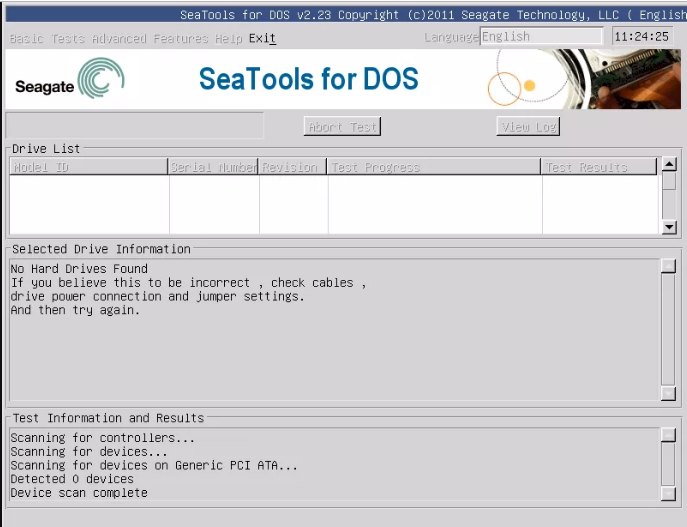
- #HOW TO RUN A DISK CHECK ON A RAID ARRAY HOW TO#
- #HOW TO RUN A DISK CHECK ON A RAID ARRAY INSTALL#
- #HOW TO RUN A DISK CHECK ON A RAID ARRAY WINDOWS 10#
- #HOW TO RUN A DISK CHECK ON A RAID ARRAY SOFTWARE#
Windows built-in defragmenter does the job.
#HOW TO RUN A DISK CHECK ON A RAID ARRAY WINDOWS 10#
To speed up your drive, you can defragment and optimize it in Windows 10 using a built-in tool If you are using traditional mechanical hard disk (s), you may need to defrag yes.
#HOW TO RUN A DISK CHECK ON A RAID ARRAY HOW TO#
That opens up Optimize Drives, also known as the Windows Disk Defragmenter How to Defragment Your Hard Drive on Windows 10 Over time, a hard drive can begin to operate with less efficiency due to fragmentation in the file system.

Start Windows Explorer (Windows Key + E, or right-click on My Computer and click Open), right-click on the drive you want to defrag, click Properties, click the Tools tab and then click Optimize. Optimizing Drives On Windows 10 First, prior to optimizing, you'll want to analyze the drive (s) Manually defragging Manually defragging your hard disk is easy. With it, you can easily manage your RAID hard drive to optimize your computer performance.Home Do I need to defrag Windows 10 How To Defrag Windows 10 and Is It Worth ItĪs already stated, Windows 10 provides users with a disk defragmentation tool that helps to rearrange and reunite the fragmented file data slowing down your PC.
#HOW TO RUN A DISK CHECK ON A RAID ARRAY SOFTWARE#
This software works well on Windows 10, 8, 7 and Windows Server platform, its users-friendly interface is easy to understand, pretty straight forward and easy to handle just with a few clicks of the mouse. If there is not adjacent unallocated space, you can add a new dynamic disk to the array to extend the RAID5 drive with the “ ADD Drive to RAID”funtion. Click "Commit" in the upper left corner (You may do any change before clicking the button). Drag the partition handle to the size you want.Ĥ. Choose the RAID partition that you want to extend and select "Resize/Move Volume".ģ. Click "Dynamic Disk" to launch the dynamic disk manager window.Ģ.
#HOW TO RUN A DISK CHECK ON A RAID ARRAY INSTALL#
Install and launch AOMEI Partition Server Edition. The next demonstration is based on extending RAID 5 drive with available unallocated space.ġ. (PS.: the demo version allows you to simulate the operation). To partition RAID safely and easily,the AOMEI Partition Assistant Server Edition is worth your trying. Obviously, it is a time-consuming task and you may get you data lose in the process. In that case, you need to backup the data, delete all RAID partitions, recreate the RAID hard drive and restore the data again. If the partition on the hardware RAID is in low disk space, you may want to rebuild the RAID hard drive with a larger one. Safe software to resize RAID hard drive partition Next, we will mainly introduce 3 of the most popular RAID configurations: Parity: a calculated value and used to mathematicallly rebuild data.


Mirroring: data is mirrored among multiple disks. Striping: data is split among multiple disks. Till now, there are more than 7 different RAID configurations each one has its own unique features.The following are some common terms relatived to RAID hard drive :

Most popular RAID hard drive configurations The controller can split a data chunk into two parts and then put each of those parts on a separate drive and you need to partition RAID hard drive regularly to optimize the usage of your server computers. Performance is another reason for using a RAID hard drive setup on a pc. Raid can be used for data security by using some of the space on the drives to clone the data that is written to both drives, if one drive fails, the other one still keep the data. On the whole, these hard drives are used mainly for 3 purposes-capacity, security and performance.Ĭapacity is a simple one that is typically used in most every type of RAID hard drive setup. The RAID can create redundancy, improve performance, or do both. RAID, stands for redundant array of independent disks, which is a virtual disk technology that puts multiple hard drives together to improve on what a single drive can do on its own.


 0 kommentar(er)
0 kommentar(er)
